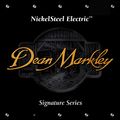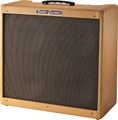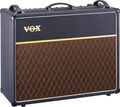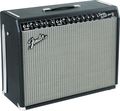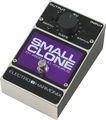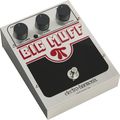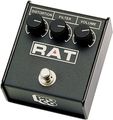Tidak
diragukan lagi !!
Gitar elektrik adalah salah satu instrumen musik yang
paling menarik. ya ga??
Gitar elektrik juga memiliki fakta dan pengetahuan lho, yang
mungkin belum seluruhnya diketahui oleh pemain gitar itu sendiri!.
Instrumen indah ini sudah ada selama berdekade-dekade dan selalu
berkembang. Tidak diragukan lagi kalo Brand gitar elektrik ternama yang pertama kali dikenal luas adalah Gibson dan Fender.
 Suara/karakter sound yang dihasilkan dari kedua brand tersebut memang
pasti berbeda.
Suara/karakter sound yang dihasilkan dari kedua brand tersebut memang
pasti berbeda.
Sound gitar Gibson bisa dibilang lebih tebal/heavy/berat daripada sound
gitar Fender yang cenderung lebih blues/crunchy/twank, tetapi berawal dari kedua brand tersebut akhirnya dapat
memunculkann gitaris-gitaris legendaris dunia, serta didalam negeri kita sendiri Indonesia.
Kini, selain kedua brand
tersebut terdapat banyak brand yang tersedia di pasaran dengan harga yang berbeda-beda, dari yang paliiing mahalll dan import sampai brand lokal yang GA KALAH BAGUS KUALITAS DAN PLAYABILITYNYA. Bahkan sekarang gitar-gitar tersebut dapat dibeli dengan mudah di toko
alat musik lokal/toko online. Trus banyak yang bilang juga si,dan saya juga merasakan, kalo Instrumen musik ini cenderung membutuhkan waktu yang lama untuk
menguasainya. Susyeee sob!! haha.
Nah, berikut ini ada 12 fakta seputar gitar elektrik yang mungkin kamu belon tau dan bisa bertambah sewaktu-waktu :p :
1. Gitar elektrik pertama kali didesain oleh George Beauchamp pada tahun 1931, kemudian dibangun oleh Harry Watson yang disebut fry pan/rickenbacker.
 |
| frying pan |
2. Nama Gibson Les Paul berasal dari nama musisi yang juga bernama Les Paul (alm.)
3. Meskipun terhubung dengan listrik, instrumen itu sendiri tidak dialiri aliran listrik sehingga aman dari bahaya kesetrum.
4. Gitar elektrik memanfaatkan gelombang elektromagnetik untuk mengubah getaran senar gitar menjadi sinyal elektrik (itulah gunanya pickup).
5. Tidak ada instrumen musik lain yang memiliki dampak besar terhadap
perkembangan musik sejak awal abad 20 selain gitar elektrik. See?!
6. Instrumen musik ini mampu menghasilkan berbagai macam aliran musik mulai dari
classic, jazz, country, pop, folk, soul, blues, funk, rock, grunge, punkrock, hardcore, skinheads, ska, metal , industrial, speed metal, trash metal, death metal, nu metal, avant garde, dan lain lain hanya dengan 6 senar !!
 |
| Les Paul |
7. Bahan dasar utama gitar elektrik adalah solid wood dan dapat terbuat dari beberapa jenis kayu sekaligus.lihat
sini
8. Terdapat banyak jenis gitar elektrik, seperti gitar 7, 8, 9, dan 12
senar, gitar double-necked, dan bahkan gitar dengan 6 neck.
9. Gitar elektrik juga ada yang menggunakan tremolo arms yang bisa dipasang dan
dilepas dengan mudah untuk mengubah pitch dari senar gitarnya.
 |
| 6 necks guitar |
 |
| double neck guitar |
10.
Jimi Hendrix adalah gitaris acid/psycedelic rock yang terkenal karena ia telah
bereksperimen banyak dengan suara gitar miliknya. Dia membuat gitar
miliknya seperti bicara dan memiliki skill untuk bermain gitar dengan
potensi penuhnya/push to the limits bro!!. Jimi Hendrix menggunakan gitar
Fender Stratocaster.
11. Gitar elektrik menangkap suara melalui dua/tiga pickup yang berupa single coil dan atau humbucker.lihat
ini
12. Gitar untuk orang kidal dibuat berbeda dengan gitar untuk orang yang
tidak kidal, walaupun gitar untuk orang yang tidak kidal bisa dipakai
juga untuk orang kidal, dengan susunan senar yang berbeda.
 |
| gitar right handed digunakan oleh left handed (Kurt Cobain) |
 |
| Jimi Hendrix |
Semoga bermanfaat
See you in the next pit bro!























